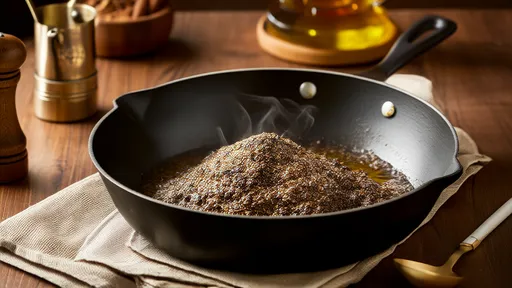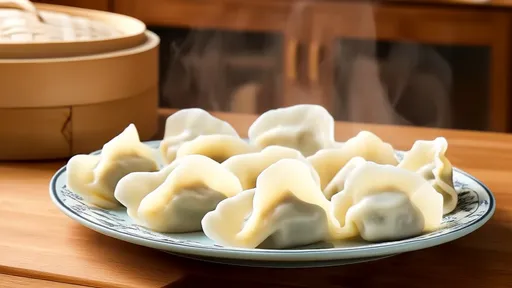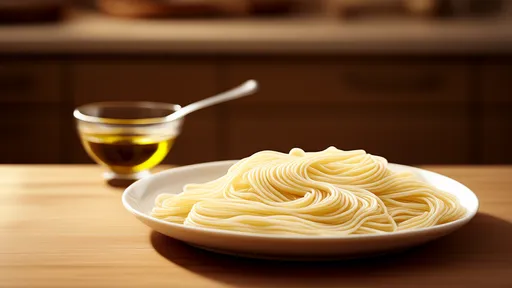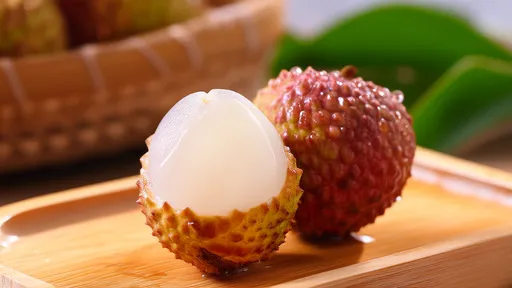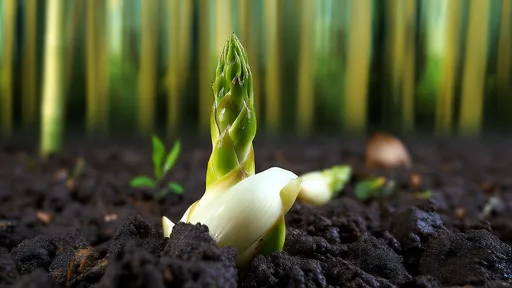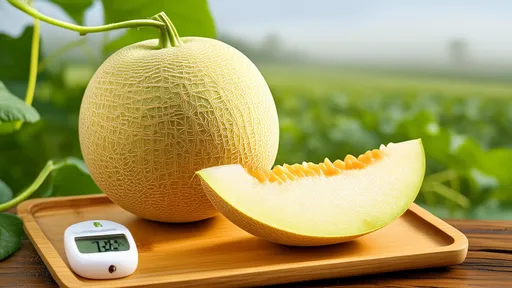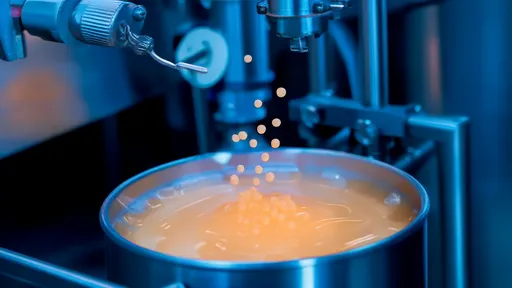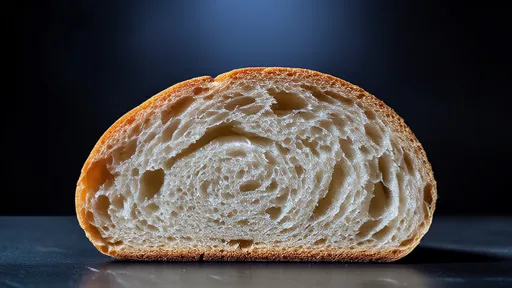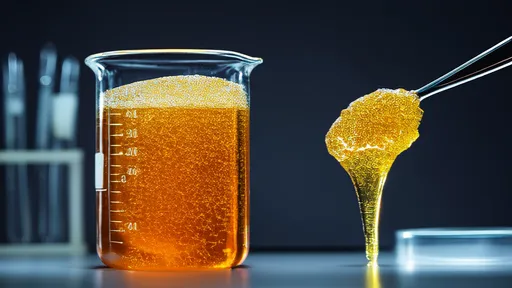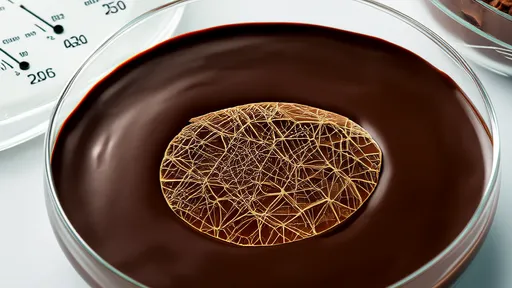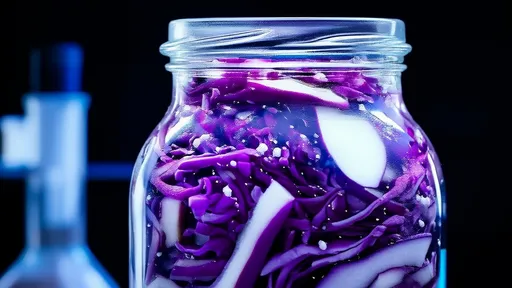The formation of rock sugar crystals is a fascinating interplay of chemistry and physics, where the delicate balance of supersaturation dictates the birth and growth of crystalline structures. At its core, this process hinges on the creation of nucleation sites—tiny clusters of molecules that serve as the foundation for larger crystals. The journey from syrup to shimmering rock sugar is anything but straightforward, and understanding the factors that influence nucleation can unlock greater control over crystal size, clarity, and yield.
Supersaturation acts as the driving force behind crystallization. When a sugar solution holds more dissolved solute than it theoretically should at equilibrium, it becomes metastable—a state ripe for transformation. The degree of supersaturation directly impacts how many nuclei form: too low, and crystals grow sluggishly; too high, and the solution may spawn a chaotic multitude of imperfect structures. Artisans crafting traditional rock sugar often manipulate temperature and evaporation rates to hit that sweet spot where a limited number of robust nuclei develop, eventually growing into those prized, chiseled crystals.
Temperature fluctuations play a dual role in this alchemy. As syrup cools, solubility decreases, pushing the solution further into supersaturation. But here’s the nuance—rapid cooling tends to generate excessive nucleation, resulting in smaller, less defined crystals. Conversely, a gradual temperature decline allows for selective nucleation, where only the most stable molecular configurations survive. This principle explains why some heritage methods involve cyclic heating and cooling, effectively "culling" weaker nuclei while promoting the dominance of a few perfect specimens.
The vessel itself whispers influence into the process. Microscopic imperfections on container surfaces—scratches, dust particles, even trapped air bubbles—can become unintended nucleation sites. Traditional bamboo trays, for instance, are prized not just for their breathability but for their micro-textured surfaces that distribute nucleation evenly. Modern stainless steel tanks, though sterile, often require deliberate seeding with powdered sugar to initiate controlled crystallization. This dichotomy highlights how material choices shape the very architecture of sugar crystals.
Impurities tell a paradoxical tale. While we might assume purity leads to perfection, trace elements like honey residues or fruit acids sometimes act as natural inhibitors, slowing nucleation to produce larger, more geometrically precise crystals. Japanese artisans adding vinegar to syrup or Indian makers using tamarind extract are essentially harnessing this phenomenon. The impurities don’t prevent crystallization—they choreograph it, creating a rhythmic molecular dance where nuclei form at measured intervals rather than in a frenzied rush.
Agitation stirs the pot—literally and figuratively. Stirring introduces energy that can both encourage and disrupt nucleation. In commercial rock sugar production, the timing of mechanical stirring is precise: early agitation promotes uniform nuclei distribution, while late-stage stillness allows undisturbed crystal growth. Some small-batch producers swear by moon-phase timing, claiming gravitational pull affects solution dynamics. Though scientifically dubious, such traditions underscore how deeply nucleation behavior has captivated human curiosity across cultures.
The crystal’s eventual form—whether jagged or glassy smooth—bears the fingerprints of its nucleation history. Fewer initial nuclei mean each can command more solute, growing outward in orderly lattices. This explains why prized "single crystal" rock sugar specimens often originate from painstakingly controlled environments where nucleation was deliberately suppressed. The resulting translucency isn’t just aesthetic; it signals molecular uniformity where light encounters no chaotic internal boundaries to scatter against.
Modern imaging technologies have peeled back another layer of mystery. High-speed microscopy reveals that nucleation isn’t a single event but a cascade—molecular clusters constantly form and dissolve until critical stability is achieved. This fluidity means that even after visible crystals appear, the syrup still teems with potential nuclei that may or may not survive. Such insights are revolutionizing industrial rock sugar production, where real-time monitoring allows dynamic adjustment of conditions to favor optimal nucleation density.
From grandmother’s kitchen to automated confectionery plants, the quest to master nucleation continues. Recent breakthroughs in ultrasonic nucleation—using sound waves to trigger crystal formation at predetermined points—hint at a future where rock sugar architecture could be designed at the nano-level. Yet for all our advances, there remains something alchemical about watching sugar syrup transform, as if those first nuclei carry not just molecular potential, but centuries of human wonder crystallized in each perfect facet.
The art of unlocking the full potential of spices lies in a time-honored technique: dry-roasting, crushing, and coaxing out their essential oils. This ancient method, passed down through generations of culinary masters, transforms ordinary spices into aromatic powerhouses that elevate dishes to extraordinary heights. The process may seem simple at first glance, but mastering it requires patience, precision, and an understanding of how heat interacts with different spice varieties.
For many home cooks and professional chefs, peeling and cutting yams can be an unexpectedly unpleasant experience. The vegetable, known for its nutritional benefits and culinary versatility, has a notorious side effect – it can leave your hands unbearably itchy. This common kitchen woe has led to numerous home remedies and old wives' tales, but one surprising solution has emerged from modern technology: the microwave.
The art of making dumplings is a cherished tradition in many cultures, particularly in Chinese cuisine. While the filling often steals the spotlight, the dough wrapper plays an equally crucial role in ensuring the dumplings hold together during cooking. One of the most effective yet underrated techniques for preventing dumpling wrappers from tearing is incorporating egg whites into the dough. This method leverages the science of proteins to create a more resilient and elastic wrapper, capable of withstanding the rigors of boiling or steaming without falling apart.
In kitchens around the world, cooks face a common nemesis when preparing pasta: sticky noodles that clump together into an unappetizing mass. While many swear by the traditional method of rinsing cooked pasta with cold water to prevent sticking, a growing number of culinary experts argue that tossing freshly boiled noodles with olive oil proves far more effective. This technique not only preserves the pasta's ideal texture but also enhances its flavor profile in ways cold water simply cannot match.
Guangdong lychee, a jewel of southern China's fruit basket, has long been celebrated for its succulent flesh and floral aroma. Beyond its irresistible taste, recent research has uncovered a hidden treasure within its vibrant red peel—polyphenols with remarkable antioxidant properties. These compounds are quietly revolutionizing our understanding of how this tropical fruit may contribute to human health far beyond basic nutrition.
The high-altitude coffee farms of Yunnan Province have long been celebrated for producing beans with a distinctive flavor profile. Among the many factors influencing taste, altitude plays a particularly crucial role, especially when it comes to acidity. Unlike the bright, sharp acidity often associated with African coffees, Yunnan’s beans exhibit a more nuanced relationship between elevation and tartness—one that defies simple expectations.
The tender crunch of Zhejiang bamboo shoots has long captivated gourmets and scientists alike, their delicate texture standing as a testament to nature's perfect engineering. While chefs praise their culinary versatility, researchers have uncovered a fascinating cellular secret behind their remarkable freshness – turgor pressure. This biological phenomenon, often overlooked in discussions of vegetable quality, holds the key to understanding why these spring delicacies from China's eastern province maintain their youthful crispness long after harvest.
The Hami melon, a jewel of Xinjiang's agricultural bounty, owes its legendary sweetness to a climatic phenomenon as ancient as the Silk Road itself. Nestled in the arid embrace of China's northwest, this golden-fleshed fruit has thrived for centuries under skies that scorch by day and chill by night. What appears as hardship to most crops becomes the secret alchemy transforming ordinary melons into saccharine masterpieces.
The vast fields of Northeast China, stretching across latitudes from 40°N to 50°N, have long been celebrated as the heartland of soybean production. Among the many factors influencing soybean quality, protein content stands out as a critical metric, not just for nutritional value but also for industrial applications. Recent studies have unveiled a fascinating pattern: the protein content in Northeast soybeans exhibits significant variation along latitudinal gradients. This discovery has sparked renewed interest in understanding how geography shapes the very fabric of this agricultural staple.
The process of homogenization in ice cream mix preparation plays a pivotal role in achieving the desired texture, stability, and mouthfeel of the final product. At the heart of this process lies the principle of fat emulsification, where milk fat globules are broken down into smaller, more uniform particles. This not only enhances the emulsion's stability but also ensures a smoother consistency in the ice cream. The science behind homogenization parameters is both intricate and fascinating, as it directly influences the quality of the end product.
The phenomenon of bread staling has puzzled bakers and food scientists for generations. While most consumers associate staleness with dryness, the underlying mechanisms involve complex interactions between starch retrogradation and water migration within the bread matrix. This intricate dance between moisture and crystalline structures ultimately determines whether your morning toast will delight or disappoint.
The formation of rock sugar crystals is a fascinating interplay of chemistry and physics, where the delicate balance of supersaturation dictates the birth and growth of crystalline structures. At its core, this process hinges on the creation of nucleation sites—tiny clusters of molecules that serve as the foundation for larger crystals. The journey from syrup to shimmering rock sugar is anything but straightforward, and understanding the factors that influence nucleation can unlock greater control over crystal size, clarity, and yield.
The art of chocolate tempering is a delicate dance of temperature control, one that hinges on the precise crystallization of cocoa butter. This process is not merely a technical step in chocolate production; it is the very heart of what gives chocolate its signature snap, glossy sheen, and melt-in-the-mouth texture. Without proper tempering, chocolate can appear dull, develop a grainy texture, or fail to release cleanly from molds. The secret lies in understanding how cocoa butter behaves under varying thermal conditions.
The science behind pickling vegetables has fascinated food chemists and home cooks alike for centuries. While the process may seem straightforward – submerging vegetables in brine – the molecular dance occurring within each cell reveals a complex interplay of chemistry and physics. Recent advances in sodium ion detection techniques have allowed researchers to map the distribution of salt throughout pickled vegetables with unprecedented precision, shedding new light on this ancient preservation method.
The phenomenon of "wine legs" or "tears of wine" has captivated drinkers and scientists alike for centuries. When a glass of wine or spirit is swirled, droplets form on the inside of the glass, creating mesmerizing streaks that slowly trickle back down. This elegant display isn’t just a sign of a good drink—it’s a fascinating interplay of fluid dynamics, surface tension, and evaporation.
